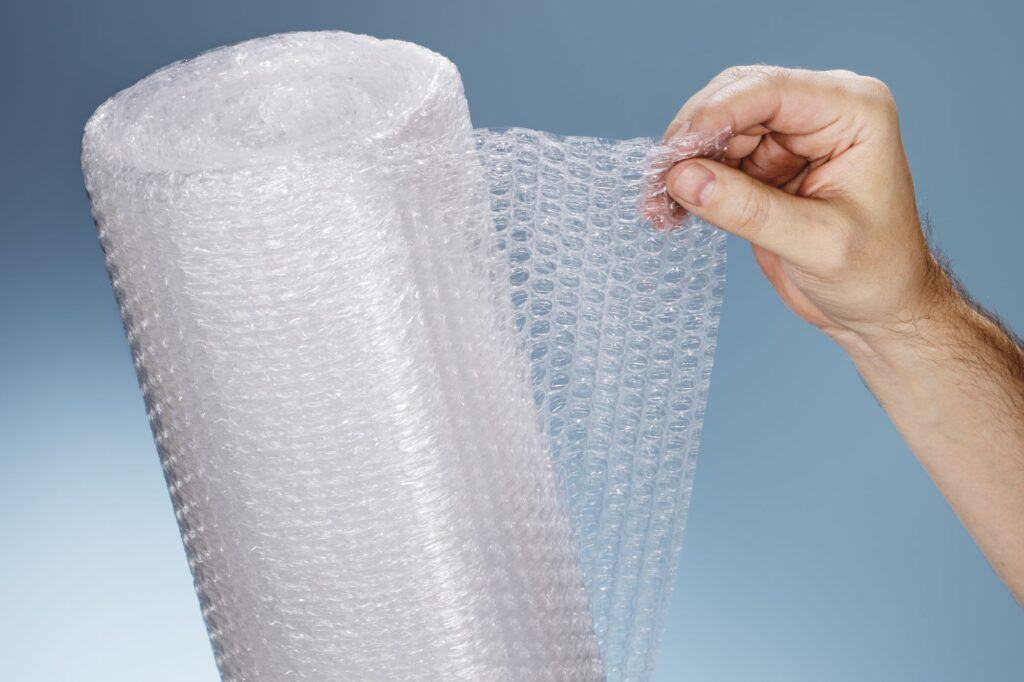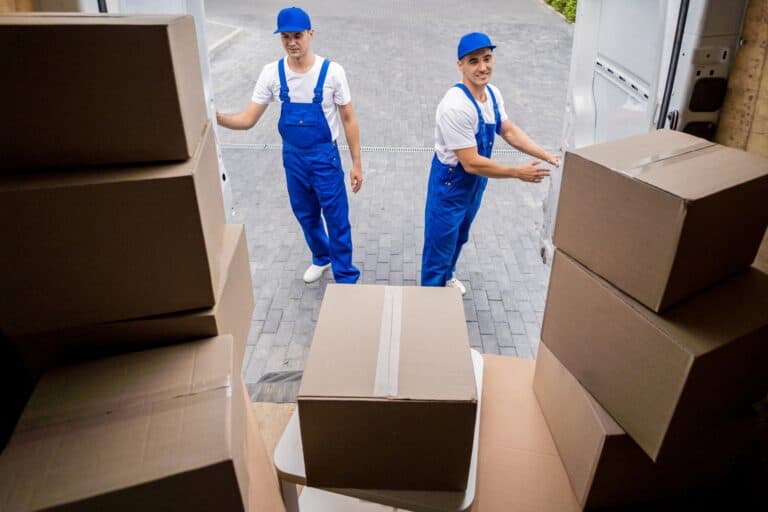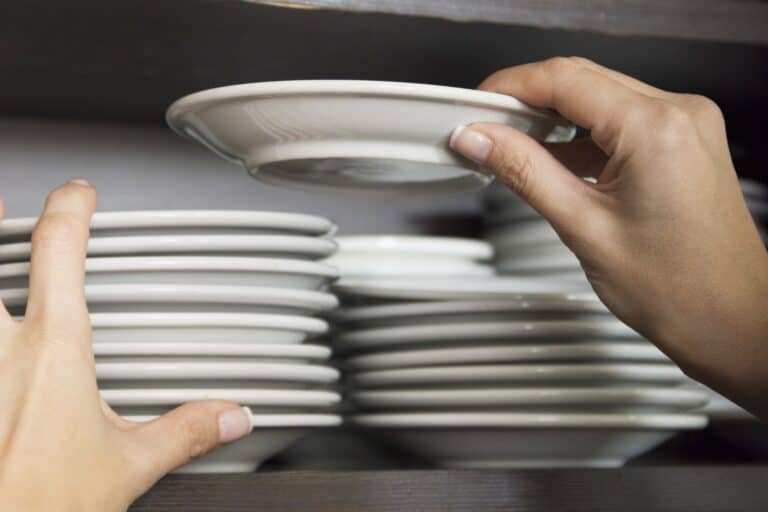Worried about how to pack household items safely for a move? This guide will show you exactly how to pack everything securely, from fragile items to large appliances. With these tips, you’ll ensure everything arrives at your new home intact and unscathed.
Key Takeaways
- Organise and gather high-quality packing materials before starting the packing process to ensure efficient and secure packing.
- Declutter your belongings prior to packing to reduce unnecessary items, making the move easier and potentially less expensive.
- Pack one room at a time, label boxes clearly, and consider using a color-coded system to simplify the moving and unpacking process.
Packing for a Move
Moving house can stir up a whirlwind of emotions – excitement for the new, nostalgia for the old, and perhaps a touch of anxiety about the packing process. But fear not, with a systematic approach, you can ease the chaos. A well-prepared moving plan is your blueprint for success, ensuring all your treasured belongings are packed safely and efficiently.
The key to a successful move is organisation and preparation. By following the advice laid out in this post, you’ll be equipped with the tools and knowledge to transition to your new abode with ease. So, roll up your sleeves – it’s time to dive into the world of:
- boxes
- bubble wrap
- packing tape
- labels
- moving blankets
- a dolly or hand truck
And beyond.
Gather Your Packing Materials
Before you dive into the sea of packing, you’ll need to build your raft. High-quality packing materials are the foundation of a secure move. Think robust cardboard boxes, resilient packing tape, and cushiony bubble wrap – these are your best allies in protecting all your belongings.
Starting the packing process with a full arsenal of materials will save you from mid-pack store runs and, ultimately, a lot of stress. Make sure to gather a mix of box sizes for different items, and don’t skimp on the bubble wrap, packing paper, and toilet paper rolls, especially for those fragile treasures.
Consider an overnight bag for personal essentials and use plastic bags for the first few days post-move as an essentials bag.
Declutter Before You Pack
Imagine unpacking boxes in your new home and finding items you haven’t used in years. To avoid hauling unnecessary clutter to your new sanctuary, start with a ruthless purge. This isn’t just about making packing easier; it’s about lightening your life’s load, both physically and metaphorically.
Decluttering can be surprisingly liberating. Here are some tips to help you get started:
- Sell those once-loved items at a car boot sale
- Donate gently-used clothes
- Pass on old toys to charity
- Involve the whole family – have the kids decide which toys to keep
- Consider hiring a professional organiser if the task seems too daunting
Remember, the fewer items you move, the less you’ll pay the removal company – a win for your wallet and your peace of mind.
Start Packing Early
The early bird doesn’t just catch the worm; it also avoids the headache of last-minute packing. Begin by boxing up those non-essentials – holiday decorations, off-season clothing, and anything else you won’t miss in the weeks leading up to your move.
Starting early gives you the luxury of time, allowing for a methodical approach to packing and reducing the likelihood of forgotten items. It’s also a great chance to use portable storage containers to keep sorted items out of your way. By pacing yourself, you’ll find that packing becomes less of a chore and more of a step towards your exciting new beginning.
Pack One Room at a Time
Tackling the entire house in one go is like trying to conquer a mountain in a single stride. Instead, focus on one room at a time. This strategy not only keeps you organised but also ensures that you fully pack each room before moving onto the next.
Labelling boxes by room simplifies the unpacking process, allowing you to settle into your new home with ease. Consider colour coding for added efficiency, and revel in the satisfaction of ticking off each room one by one. This focused approach turns a mountain of a task into manageable hills, each one bringing you closer to the summit of your move.
How to Pack Fragile Items

Fragile items are like the VIPs of your moving process – they require extra care and attention. Here’s how to pack them safely:
- Wrap them in multiple layers of paper or bubble wrap.
- Nestle them into their boxes with the tender care they deserve.
- Fill any voids with crumpled paper to prevent jostling and potential breakage.
Label these boxes clearly as ‘fragile’ to alert anyone handling them to do so with care. For items like plasma TVs and valuable artworks, consider special crates or picture boxes for transportation. And remember, for those tech gadgets with complicated wiring, a quick photo before disassembly can save hours of frustration later on.
Use Proper Box Sizes
It may seem counterintuitive, but when it comes to boxes, size really does matter. Pack those weighty books in small boxes to avoid the dreaded box bottom blowout. Small boxes for heavy items make transportation manageable and reduce the risk of injury. So, always opt for heavy boxes when dealing with bulky items. On the other hand, large boxes can be used for lighter and less dense objects, ensuring a smooth moving process.
… light items like pillows and linens can float comfortably in larger boxes without risk.
Conversely, light items like pillows and linens can float comfortably in larger boxes without risk. Remember to keep heavy items at the base and lighter items on top to prevent crushing. With the right boxes, you’ll ensure the safety of your belongings and the backs of those carrying them.
Label Boxes Clearly
As you pack, you’re not just filling boxes; you’re creating a puzzle that will need to be reassembled at your destination. Clear labelling is the key to solving that puzzle with ease. Use permanent markers to note contents and designate rooms, ensuring boxes are delivered straight to their new homes.
A color-coded system can streamline this process even further, turning a potentially arduous unpacking task into a straightforward, organised transition. With each box’s destination and contents clear, you’ll be able to focus on settling in rather than sorting out.
Secure Boxes with Packing Tape
Packing tape is the unsung hero of moving – it keeps your treasures tucked safely inside their cardboard fortresses. Here’s how to use it effectively:
- Start by taping the box’s bottom seam.
- Reinforce the edges for a strong foundation.
- When closing up the box, repeat this process on top.
- Wrap tape around the box’s edges for an extra layer of security.
Using a packing tape dispenser will spare you from the tangles and frustration, ensuring a swift and steady application. With your boxes sealed tightly, you can rest easy knowing your items are snug and secure for their journey.
Special Care for Valuables
Your valuables are more than just items; they’re memories and milestones, deserving of the utmost care. Keep them together and create a detailed inventory for peace of mind. Whether it’s jewellery, antiques, or important documents, consider special packaging or even transporting them with you to ensure their safety.
For those irreplaceable items, extra insurance may be wise, offering another layer of security for your most cherished possessions. And remember, sensitive documents should be kept within easy reach throughout the move to avoid any potential loss or compromise.
Packing Clothes Efficiently

Clothes make up a significant part of our belongings, but they needn’t take up a significant part of our moving truck. Utilise wardrobe boxes to hang clothes directly from the closet to the box, making unpacking a breeze. For hanging clothes and folded garments, the military roll method is not only space-efficient but also keeps clothes wrinkle-free.
Some packing tips to make your move easier:
- Use vacuum bags to shrink down bulky items like winter coats
- Use suitcases and drawers as additional packing spaces
- Sort clothes by season or type to save time and stress when unpacking in your new home.
Handling Hazardous Materials
Hazardous materials require special attention. Not only must they be correctly classified and labelled, but they must also be packed to meet transport regulations. Suppliers label these items with symbols and warnings for a reason – to ensure safety and prevent accidents.
Use spill-proof containers and separate boxes for hazardous items to prevent contamination. It’s also an opportune time to dispose of or donate items like half-used paint pots or fertilisers, reducing the risk of spills during the move.
Packing Kitchen Items
The kitchen, with its myriad of gadgets and glassware, can be a daunting room to pack. Here are some tips to make the process easier:
- Wrap dishes with care, using bubble wrap or packing paper to cushion each piece.
- For glasses, consider using dividers to keep them separate and protected.
- For flatware, simply wrap the entire tray to keep everything together and prevent any pieces from getting lost or damaged.
NOTE
Sharp knives and glass lids require individual attention to prevent accidents. Pots and pans can be nested together to save space, but make sure to protect their surfaces from scratching.
Preparing Large Appliances
Large appliances are the behemoths of the moving process and preparing them is a task that should not be left to the last minute. Defrost and clean your refrigerator well in advance, ensuring any water lines are properly drained. Securing moving parts, like the drums of washers and dryers, will prevent damage during transport.
For stoves, especially those powered by gas, professional assistance may be necessary to ensure safe disconnection and transport. By taking these steps, you’ll ensure your appliances arrive ready to serve in their new home.
Moving Plants Safely
Plants add life and warmth to a home but moving them requires a gentle touch. Here are some tips for moving plants:
- Check whether your removals team can handle plants, or plan to transport them yourself.
- Prune larger plants to prevent breakage.
- Wrap plants in fleece to protect them from the elements.
Avoid watering your plants immediately before the move to keep them light and prevent water damage. Once you’ve arrived, give them a chance to adjust to their new surroundings before watering or feeding them.
Packing an Essentials Box
An essentials box is your lifeline during the chaos of moving. Pack it with items you’ll need for the first few nights, including:
- Clothes
- Toiletries
- Snacks
- Cleaning supplies
- Basic tool kit for any immediate tasks
Don’t forget to keep this box easily accessible during your move.
Keep this separate box away from the rest and label it clearly. By having your essentials at hand, you’ll be able to maintain a sense of normalcy amid the boxes and bubble wrap.
Using Professional Packing Services
Sometimes, the best packing tip is to let the professionals handle it. Professional packers in Harrow can save time and protect your items with high-quality materials and experienced care. They offer comprehensive insurance for peace of mind and customisable packages to fit your needs.
For valuable antiques, large collections, or if you’re running a business, professional services can be invaluable. Always choose a reputable service with positive reviews to ensure satisfaction.
Summary
As we wrap up our packing journey, remember that a successful move is all about preparation, organisation, and the right materials. From decluttering your space to securing your boxes with packing tape, each step is essential in ensuring the safe transport of your belongings. Embrace this process as an exciting chapter in your life and tackle each task with confidence.
May your move be smooth, your boxes light, and your new home filled with joy. Remember these tips, roll up your sleeves, and pack with the assurance that your cherished possessions will arrive safely at their destination.
Frequently Asked Questions
What should I pack first when moving?
Pack items you don’t use daily first, like off-season clothing, decorations, and books, to avoid disrupting your routine before the move.
How do I ensure my fragile items are protected during the move?
Make sure to wrap fragile items in multiple layers of bubble wrap or packing paper, use sturdy boxes, fill any gaps with crumpled paper, and clearly label the boxes as ‘fragile’ to ensure their protection during the move.
Can I pack and move my cleaning supplies and paint?
It’s best to use up or properly dispose of hazardous materials like cleaning supplies and paint before your move to ensure safety and compliance with transport regulations.
Should I hire professional packers for my move?
Yes, hiring professional packers in Harrow is a great investment if you have valuable items, a large inventory, or want to save time and stress.
How can I keep my clothes organised during the move?
To keep your clothes organised during the move, use wardrobe boxes, roll or vacuum pack to save space, and sort them by season or type for easy unpacking at your new home.







